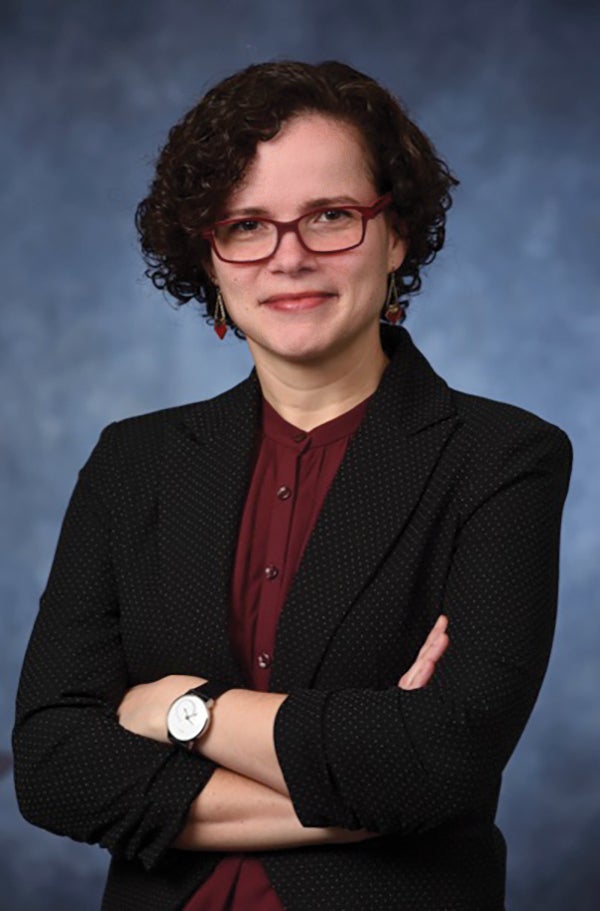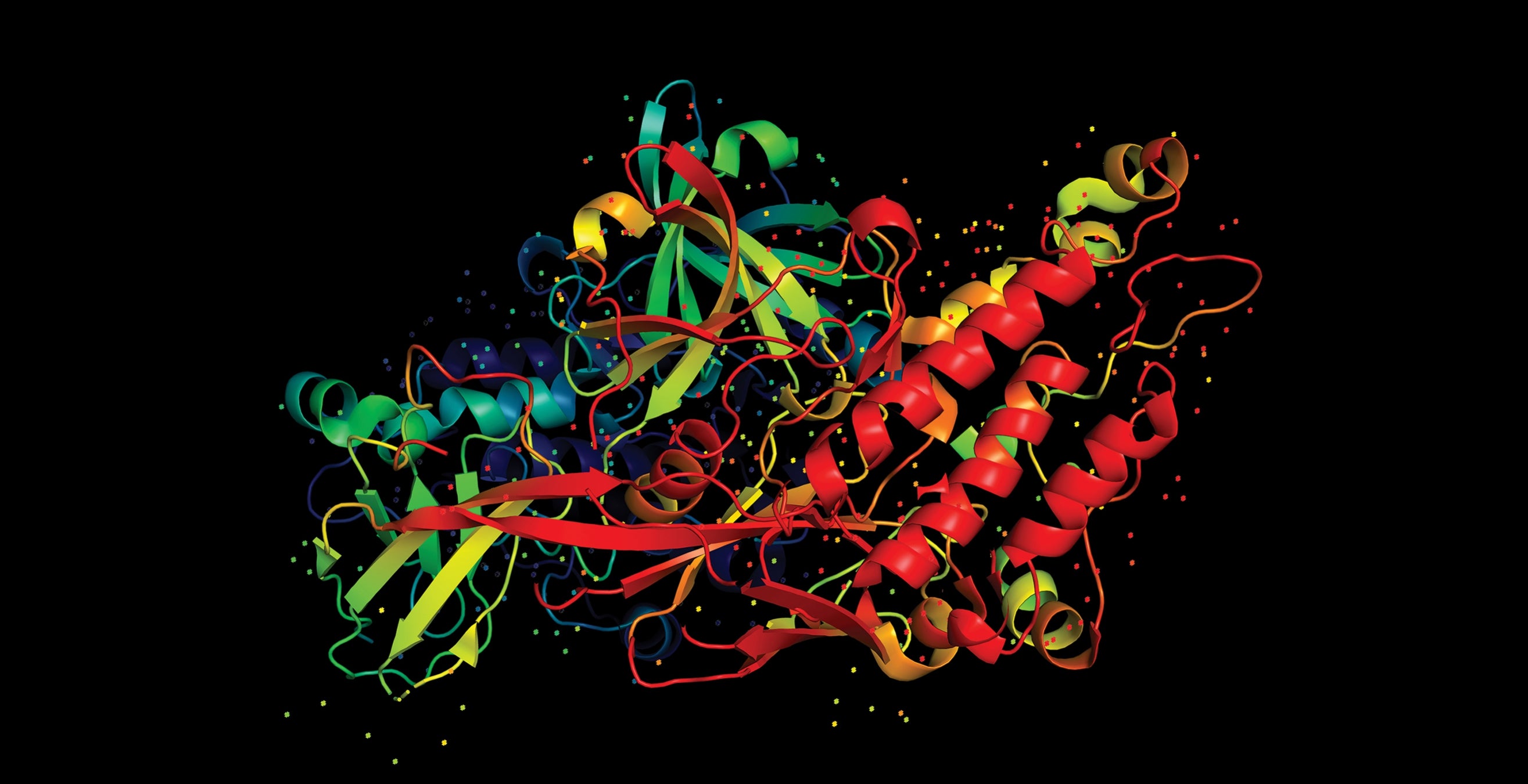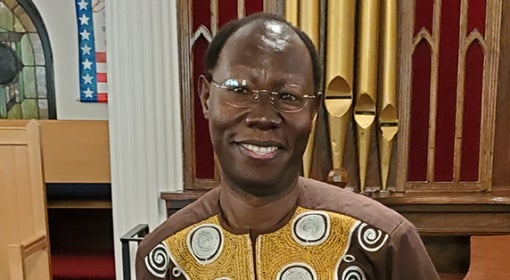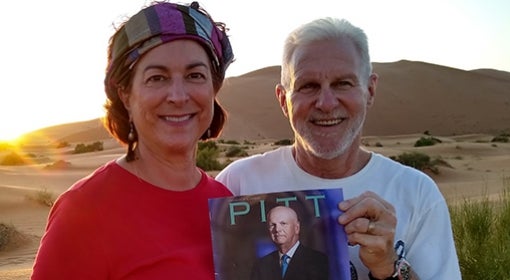You may not have heard of them, but “forever chemicals” can be anywhere: on cell phones, fast-food wrappers, non-stick cookware, many forms of firefighting foams and protective gear—and even dental floss. The very real health concerns they pose are ubiquitous, too. These synthetic chemicals, called PFAS, are so worrisome that the National Science Foundation awarded Pitt’s Carla Ng a five-year, $500,000 grant in 2019 to investigate their environmental impact.
It’s certainly not a small problem, warns Ng, who is an assistant professor of civil and environmental engineering in the Swanson School of Engineering. PFAS, she notes, are considered forever chemicals by scientists because they barely degrade in the natural environment. Most troubling, they’re turning up in our water and food supplies and in the air we breathe.
PFAS are linked to cancer cases, chronic disease and several other serious health problems. Yet, PFAS (per- and polyfluorinated alkyl substances), a compound class of more than 4,000 different chemicals, have been heavily used in consumer products and industrial processes. Some of them can be toxic in even small levels, but the question is which ones specifically, as there is only reliable data on 10 to 15 of them.
 Enter Ng. Knowing that testing thousands of PFAS, one by one, would be a Herculean task taking years, she and her team are instead using predictive modeling, which uses computational analysis to forecast how a PFAS might behave in biological systems.
Enter Ng. Knowing that testing thousands of PFAS, one by one, would be a Herculean task taking years, she and her team are instead using predictive modeling, which uses computational analysis to forecast how a PFAS might behave in biological systems.
Principally, Ng relies upon two approaches that each examines, at the molecular scale, how PFAS interact with proteins in the body. Then, she and her researchers scale up to physiologically based models—to represent an entire organism—to predict, for example, if a PFAS is absorbed through the skin, breathed in, or taken in through food or drinking water, how much accumulates in the body and also where in the body, such as the liver or the brain, based on interactions at the molecular scale. Based on that criteria, the researchers can predict toxicological impacts.
One of her lab’s approaches is to identify likely PFAS targets from the Protein Data Bank, a website that houses 3D structures of previously evaluated proteins. Once a protein is chosen, the researcher then manually builds a PFAS structure and molecularly “docks” it (or pairs it in a computer program) with the protein to get an analysis of how strongly the protein and PFAS will bind or interact.
What is significant about this approach, Ng says, is the process helps researchers understand what causes the interaction. Do the PFAS have a charged part of the molecule that interacts with an opposite charge on the protein, is it hydrogen bonding, or is it a hydrophobic interaction?
“Once we get these components of the interaction, that then gives us clues about how structural features on the PFAS lead to stronger or weaker interactions,” she says. “We’re really trying to build what are called structure activity relationships, and knowing those relationships allows us to have predictive power for new structures.”
Ng says her journey to using models is at the intersection of chemistry, biology and engineering. That journey began when she was a youngster who excelled in science lessons at school in Brooklyn and grew to appreciate nature by camping at Lake Sonoma with her father. She brought her research to Pitt in 2016 where she and her graduate students immediately began refining and expanding her models.
Ultimately, Ng believes her research will help initiate policy for more rigor and transparency in making companies disclose the lists of chemicals and provide health warnings regarding their products. Currently, she points out, consumers make choices every day unaware that the particular products might not be safe. Also worrisome, she adds, is that scientists don’t have full access to products’ chemical identities, which would be very useful for conducting predictive analysis to better inform consumers.
“We’re far behind the game in understanding the impact of all the [PFAS] mixtures and compounds that are out there,” she says.
Something has to be done, she stresses, to reduce the amount of chemicals that are used everywhere, saying you don’t have to have 65 different ingredients in a formulation to make it work.
“We need to start being more rational about why certain chemicals are used in certain products,” she says, “and whether the benefit of having them outweighs the risk. We need policy and data that are fairer to the people who are being involuntarily exposed to these substances.”
Breakthroughs in the Making
Fully Charged
Smartphone users frequently complain that their phone batteries don’t age well. To protect battery charging capabilities, Nicolas Kshatri (ENGR ’21), Mohamed Morsy (ENGR ’20) and Matthew Rosenblatt (ENGR ’20) created Canal Battery Guard. It plugs in between the charging brick and the charging cord. Canal’s app then measures the battery temperature and, when necessary, makes it rest to minimize overheating, the main cause of battery degradation. The device’s inception began three years ago during Morsy’s presentation in a Swanson School of Engineering class. The classmates have since cofounded Canal Electronics and hope to market their device soon.
Breathing Room
Children with narrowing airways—either hereditary or caused by injury—can lead to life-threatening emergencies. Treatment often involves stents, which hold airways open but can cause lasting damage once removed. New Pitt research on biodegradable stents could significantly help. In lab testing, published in Communications Biology, balloon-expandable ultra-high ductility magnesium-alloy tracheal stents were less invasive. “We hope this new approach leads to new and improved treatments for patients with this complex condition as well as other tracheal obstruction conditions, including tracheal cancer,” says Prashant N. Kumta, Edward R. Weidlein Chair and professor of bioengineering at the Swanson School of Engineering.
Face-to-Face
Imagine an orthodontist—knowing which genes influence facial development—predicting the peak growth of a child’s jaw in order to perfectly time treatment. That’s just one example (treating congenital facial malformations is another) of the benefits possible through linking which parts of a person’s DNA affect facial appearance. To connect genes with faces, a collaborative research team—led by Pitt professors Seth Weinberg, an anthropologist, and John Shaffer, a human geneticist—scanned genetic markers of approximately 8,000 individuals and identified about 130 chromosomal regions associated with specific aspects of facial shape. The findings, published in Nature Genetics, are another step toward using genetic information to create personalized treatment plans.
This article will appear in the Spring 2021 edition of Pitt Magazine.





